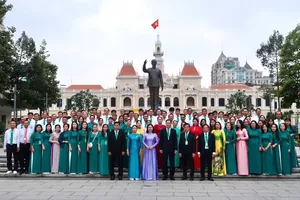
The National Center for Hydro-Meteorological Forecasting reported significant trends in temperature, rainfall, and weather phenomena for December 2024.
Deputy Head of the Weather Forecast Department, National Center for Hydro-Meteorological Forecasting Nguyen Duc Hoa said that in December, there is a possibility of 1 storm forming in the East Sea.
Additionally, cold air will increase in frequency and intensity, potentially causing severe cold, especially in the second half of the month. Concurrently, the Central and South Central regions may see widespread moderate to heavy rainfall.
The US Global Climate Monitoring System forecasts that around December 12, a powerful cold front will sweep down into the country, penetrating deep into Ho Chi Minh City and the Southern region. Then, the cold air will continue to strengthen on December 15, causing the temperature across the country to drop significantly. In particular, the Northern region may experience severe cold.
From December 2 to 7, a low pressure trough at about 4-7 degrees North latitude will slightly lift its axis to the North with the possibility of connecting with a low pressure area at sea.
Until December 7, Ho Chi Minh City's weather will be influenced by the two systems, potentially bringing unseasonal rain across the area.
Explaining the phenomenon of fog in the morning in the southern metropolis, Head of the Hydrometeorological Forecasting Department under the Southern Hydrometeorological Station Le Dinh Quyet said that as the year concludes, chilly air occasionally moves southward, leading to cooler temperatures during the night and early morning.
In the early morning, the sun is covered by low clouds, direct radiation does not reach the ground, causing low air temperature, high humidity and light wind to create a layer of fog that reduces horizontal visibility, obscuring high-rise buildings and architectural structures.
Weather forecaster Le Thi Xuan Lan reported that air pollution in Ho Chi Minh City has reached high levels. Elevated dust particle concentrations in the air have caused water vapor to condense on the particles, resulting in widespread fog.
Unseasonal rain associated with air pollution and low temperatures causes very thick fog. Fog reduces visibility, especially this is an indication of severe air pollution. If there is no rain but fog, it is called dry fog, which is also caused by air pollution.
























